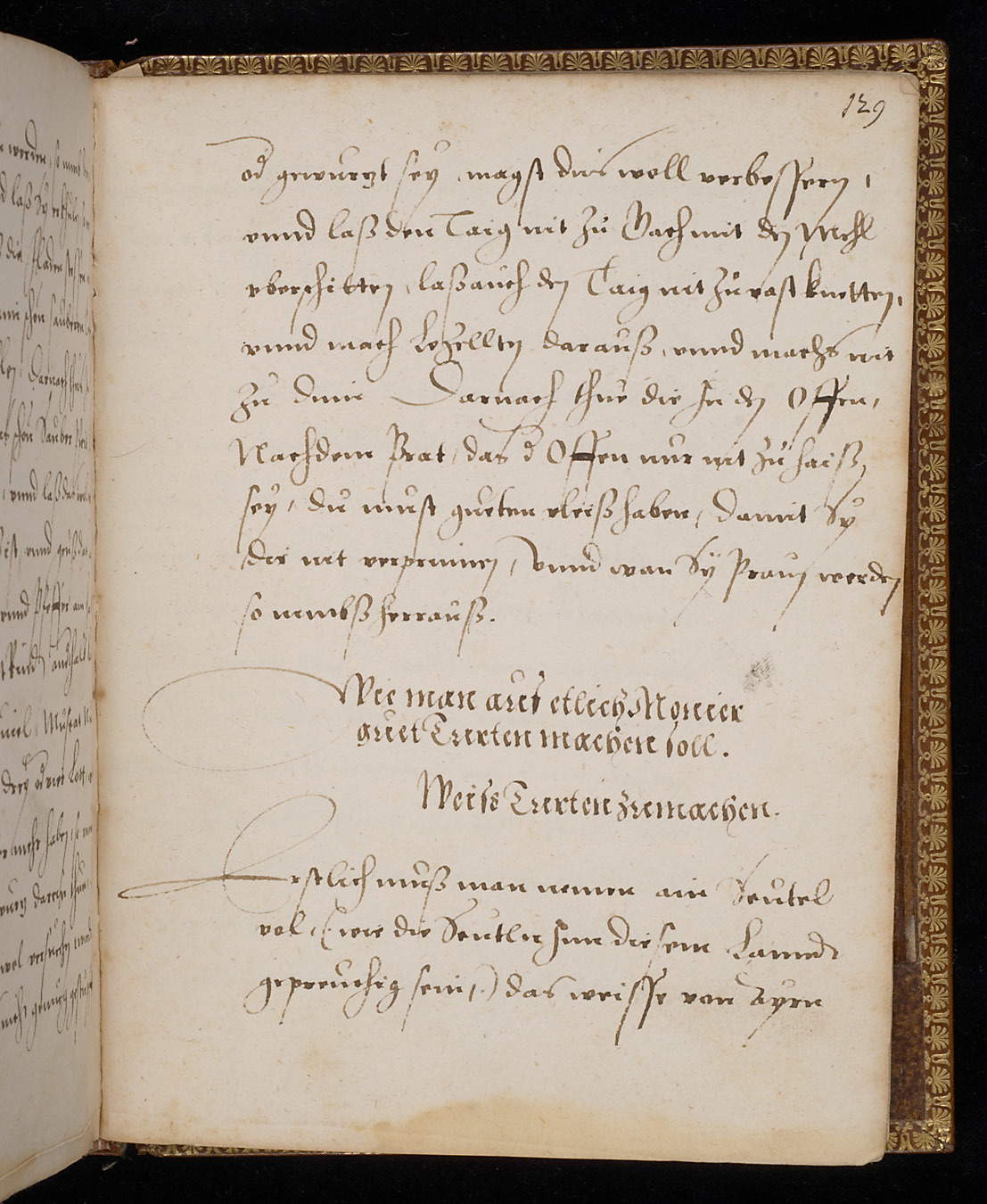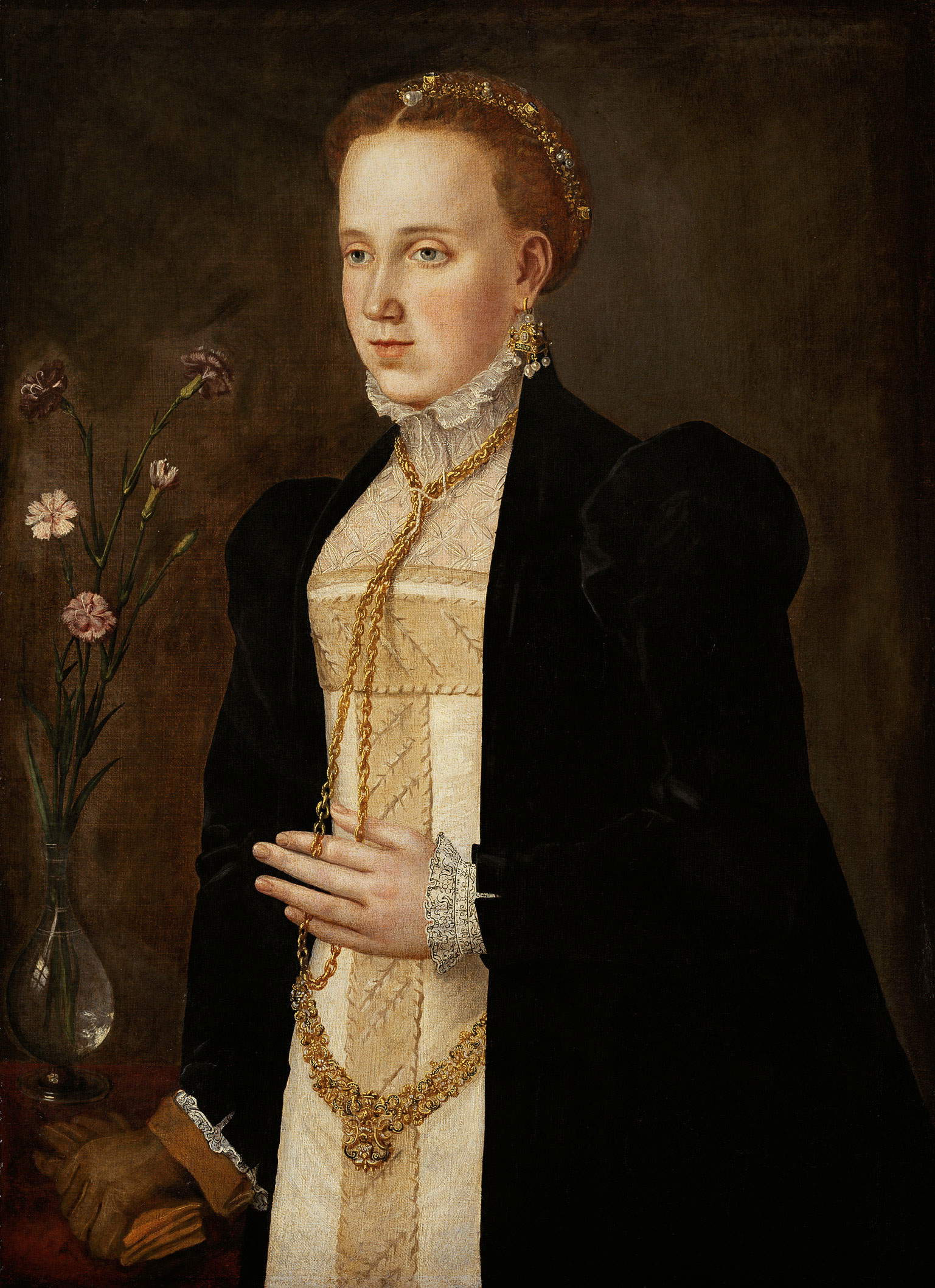Austrian cuisine, particularly Tyrolean cuisine, has ancient origins, from meat dishes to delicious desserts.A genuine cookbook that brings together more than two hundred recipes of the time dates back to 1543-1544. An ancient manuscript cookbook documenting Austrian culinary traditions of the sixteenth century has become famous for its historical, social and cultural value as well as for the female character to whom it is linked. On the leather cover of the cookbook is written the name of Philippine Welser, so the cookbook is believed to have belonged to the latter, and is even thought to have been its author. The one preserved at Ambras Castle in Innsbruck may in fact be the first cookbook written by a woman on German soil, a field reserved until then for the male sex, but not published. At that time Philippine was about eighteen years old, so given her young age, it could also be assumed that the cookbook was commissioned by her mother for her daughter, who was of husbandly age. In any case, it has been noted that the recipes in the volume identify the culinary traditions of the bourgeoisie of the city of Augsburg, to which Philippine’s own family belonged, and not those of the Tyrolean rulers. These are not precise and accurate recipes, as they lack information on ingredient doses and cooking times, indulging in some cases even the creative freedom of those who tried their hand at recipes.
However, these follow a categorization according to cooking method. Particularly interesting are the handwritten additions that can be traced back to Philippine herself, showing that the cookbook was actually used and also testifying to her interest in wellness and foods useful for healing: a series of tasty recipes are dedicated to people who feel weak and physically challenged. Researcher Raffaella Sarti argues that in German-speaking countries cooking was a strongly feminine sphere, much more so than in other nations, such as Italy and France: the first German cookbook printed and authored by a woman is that of a doctor’s wife, Anna Wecker, dating back to 1597 and providing health tips for its readers through recipes for elaborate dishes, everyday dishes, quick meals and advice for less affluent families. However, not all cookbooks were published; rather, they served as reminders to the girl janitors of the domestic hearth, often to maids, to prepare simple dishes and traditional dishes to offer to the families with whom they worked. The oldest of these unpublished cookbooks attributed to a woman appears to be Philippine Welser’s Kochbuch: an exception at the time since the latter belonged to the bourgeoisie.
But who was Philippine Welser? She was the daughter of an Augsburg merchant, but she is best known for being the secret wife of Archduke Ferdinand II of Habsburg. At Ambras Castle in Innsbruck, built by the latter especially for her, Philippine spent a long time cooking, experimenting with new dishes and also using products from the New World. This was her passion. In addition to the cookbook, she is also credited with a book devoted to medicinal herbs: indeed, she was an excellent connoisseur, as well as an enthusiast, of these kinds of herbs, which she employed to make the sick heal. Among the townspeople she was well known for her dedication to doing good, with charitable works aimed at the less fortunate and with natural remedies with which she healed the sick.
 |
| Kochbuch der Philippine Welser (c. 1543-1544; Innsbruck, Ambras Castle) |
The Welsers traded in spices and held a very important role in this field, including a global one. Philippine’s family thus belonged to the bourgeoisie, was well-to-do but lower class than the nobility, so the girl, despite her beauty, could not have aspired to unite in marriage with a nobleman. She rejected many suitors until she met the governor of Tyrol, Ferdinand II. Even the latter, of great charm, came to reject his suitors, at least until he met the beautiful Philippine. The two met in Augsburg during a visit by Emperor Charles V. The ruler, accompanied by his brother, Ferdinand I, and his nephew, Archduke Ferdinand II, was received with full honors in the Welser household, which threw a party for the event. Ferdinand and Philippine could not take their eyes off each other; it was a true love match, and the girl’s father soon noticed this, and he decided to send his daughter as far away as possible so that she would not fall into a love forbidden by the conventions imposed by society. At the age of twenty Philippine then moved in with her aunt Katerina, who lived in the castle of Březnice, in Central Bohemia, and it was here that the two young people had the opportunity to meet for several and various times. Ten years after their first meeting, one night in 1557, after a full day of very successful hunting, Ferdinand and Philippine were secretly married in the castle chapel. It was a morganatic marriage, meaning that it implied the exclusion of any right of dynastic succession for wife and children, and was usually celebrated between people from different social classes. The following year, in June 1558, the young woman gave birth to the couple’s first child, whose birth was attended by the Italian botanist Andrea Mattioli, Ferdinand’s physician and author of a famous herbarium, who made them both swear not to say anything to anyone about this happy event. The next morning the porter found in front of the main entrance to the castle of B?eznice a newborn child and, impressed by this fact, immediately took him to Philippine, who pretended to adopt him. They named him Andrew and similarly, in November 1560, also adopted Carlos, the couple’s second son. Following the birth of her children, Philippine decided to apply to the emperor himself for recognition of her marriage to Ferdinand, even though wife and husband belonged to two different classes: the archduke was afraid to reveal his marriage union to his father, and the emperor, without knowing who the husband in question was, gave his approval. Great surprise there was when he found out that it was his nephew: he called him before him, and Ferdinand got down on his knees and began to cry for forgiveness. So did Philippine. At last the emperor recognized the marriage, but on the condition that he would keep it secret forever and that not only Ferdinand but also his descendants would renounce their right to succession to the throne.
 |
| Anonymous, Portrait of Philippine Welser (mid-16th century; Innsbruck, Ambras Castle). Credit KHM Museumverband |
 |
| Anonymous, Portrait of Archduke Ferdinand II of Habsburg (mid-16th century; Innsbruck, Ambras Castle). Credit KHM Museumverband |
Two more children were born in 1562, twins, Felipe and Maria, who died in infancy. In 1564 Emperor Maximilian II came to the throne, who sent Ferdinand to Ambras Castle; Maximilian was later succeeded by Rudolf II in 1576. That same year, the archduke and Philippine’s eldest son, Andrew, became 18 and was to be appointed cardinal: surely an “abandoned” child could not have held that office, so the pope released his parents from any oath of secrecy and their union could finally be made public. However, Philippine could not enjoy the public announcement of the marriage for long: she died four years later in Ambras Castle. It is thought that her mother-in-law was never able to accept ’union of her son with a bourgeois and, according to one belief, Philippine may have been murdered in a bathtub in the wing of the castle dedicated to a sort of Renaissance spa.
Portraits of the newlyweds are still preserved in Ambras Castle: an anonymous painter of the mid-sixteenth century painted the portrait of the beautiful young Philippine. Brown hair gathered and adorned with a precious hairpin, blue eyes, very white skin: the woman is shown in all her beauty and refinement standing with her gaze averted from the viewer, elegantly dressed and richly jeweled. Ferdinand, too, is shown standing in all his might: he turns his gaze toward the viewer, presenting himself firm in his elegance (note the refined fabric decorations).
The love story of Philippine and Ferdinand still lives on in the halls of the castle, enduring after centuries of opposition and class differences. A union that was forced to remain secret for a time, but then managed to overcome all hostilities dictated by convention, as only true love can make possible.
For more information about Ambras Castle and the protagonists of the love story, you can visit the official website austria.info
Warning: the translation into English of the original Italian article was created using automatic tools. We undertake to review all articles, but we do not guarantee the total absence of inaccuracies in the translation due to the program. You can find the original by clicking on the ITA button. If you find any mistake,please contact us.